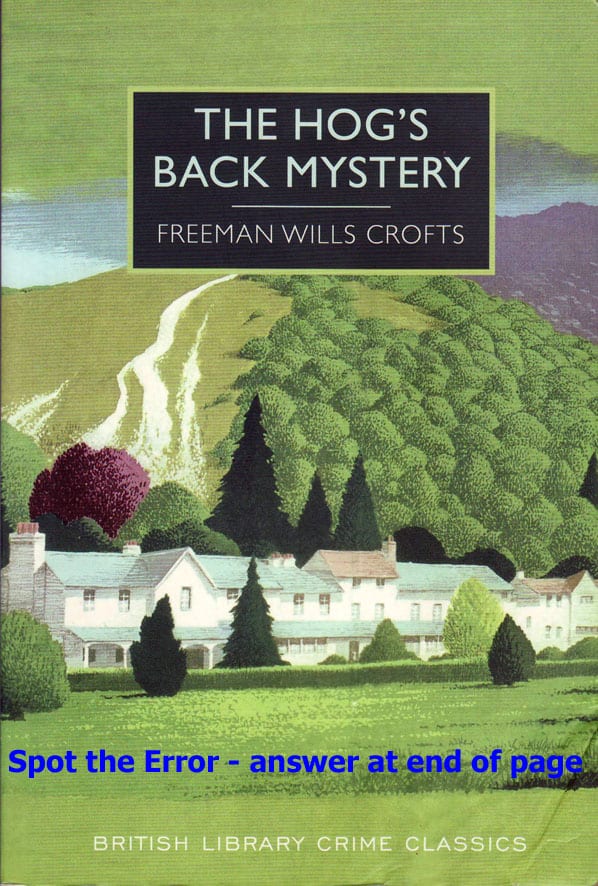A Good Read: The Hog’s Back Mystery

Our author this month, Freeman Wills Crofts, was born and raised in Ireland. He trained as an engineer and had a successful early career with the Irish railways. In 1929, he abandoned railway engineering and became a full-time writer, settling in the village of Blackheath, near Guildford. A number of his books are set in the Guildford area, including “The Hog’s Back Mystery” (1933) and “Crime at Guildford” (1935).
He is best remembered for his favourite detective, Inspector Joseph French who was a very different type of detective from that of many other writers. Whilst Agatha Christie used Hastings as a foil to Poirot and Arthur Conan Doyle had Dr. Watson as a sounding board for Holmes, Inspector French always set about unravelling each of the mysteries presented to him in a workmanlike, exacting manner without any such ‘partner’.
“The Hog’s Back Mystery” is a classic example of Crofts’ work. He obviously knew the local area quite well because all the action is set between Farnham and Guildford and around the villages of Compton, Puttenham, Seale, Farncombe and Binscombe. Even the local roads and travel times are accurately placed in the text. He also made use of the fact that the original Guildford and Godalming Bypass started construction in 1929 and opened to traffic in June 1934. Bearing in mind that this book was published in 1933, Crofts must have been a frequent visitor to the wider area in order to have included such current activity. Presumably this came about because of his railway engineering background.
The core of the story is that three school friends, Julia Earle, her sister Marjorie Lawes, and Ursula Stone gather at Julia and Dr. James Earle’s secluded cottage, St. Kilda, to share light-hearted reminiscences of their school days. Ursula discovers that not only is Julia having an affair with her neighbour, but that Dr. Earle has been seen in London with a mysterious woman, dressed in grey. As tensions mount, Dr. Earle disappears from his study in extraordinary circumstances: one minute he is sitting in his living room, comfortably settled with newspaper and slippers, and the next he has vanished.
The police are called in. At first, they suppose Dr. Earle has gone off with the woman in grey. However, their investigation uncovers further discrepancies such as his not taking any money or personal belongings. The local police turn to Inspector French of Scotland Yard to help solve the mystery. The case soon takes a more complex turn; other people vanish mysteriously, including one of Dr. Earle’s house guests. As the situation becomes more perplexing, French finds himself investigating no fewer than four murders.
Crofts’ writing style takes the reader through the entire investigatory process to a solution where all the clues are buried in the text but in plain sight. It would, however, be a very dedicated reader who could work out ‘who-done-it’ before the denouement. What makes Crofts’ ending different is that in explaining the case to his fellow police officers, he works his way through all the clues (even giving page numbers to the reader) so that his logic can be followed. No flights of fancy or sudden revealing of hidden facts here – just an engineer’s logical approach from problem to solution.
Did you notice the error on the front cover of the book as illustrated above? The image is of the Burford Bridge Hotel at the foot of Box Hill near Dorking – nowhere near the Hogs Back!



